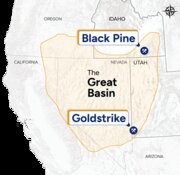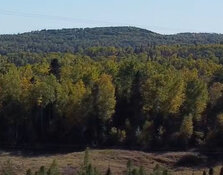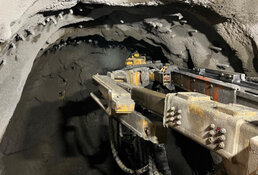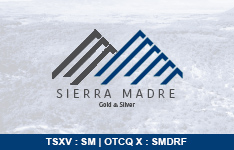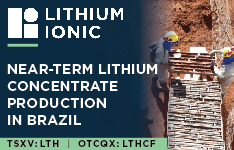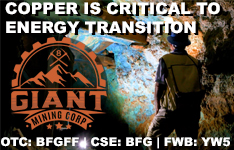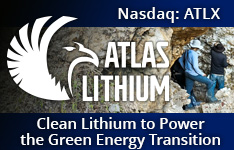West Red Lake Gold Mines Ltd. (WRLG:TSX.V; WRLGF:OTCQB; FRA:UJO) has announced high-grade assay results from its ongoing underground definition drilling campaign at the Madsen Mine in Ontario's Red Lake Gold District. The results, targeting the South Austin Zone, support the company's near-term plans to restart production in the second half of 2025.
The company reported multiple high-grade intercepts, including 18.7 meters grading 48.97 grams per tonne (g/t) gold (Au), with a subinterval of 2.0 meters at 428.83 g/t Au, and 4.5 meters at 52.86 g/t Au, including 1.0 meter at 213.62 g/t Au. All drill holes were conducted from underground drill bay 12-4669, located just below the recently completed Stope 6 bulk sample panel.
According to Shane Williams, President and CEO in the news release, "tight-spaced drilling provides the resolution needed to properly quantify and realize further upside potential from the very high-grade pockets of gold mineralization ahead of stope design." He added that these results, alongside positive bulk sample reconciliation, boost confidence as the company progresses toward production.
The South Austin Zone currently hosts an Indicated mineral resource of 474,600 ounces at an average grade of 8.7 g/t Au and an additional Inferred resource of 31,800 ounces at the same grade. These figures are part of the broader Madsen mineral resource base, which includes multiple zones such as Austin, McVeigh, and 8 Zone.
The company previously reported on May 7 that its bulk sample campaign achieved a gold grade reconciliation rate of 96.1%, with total recovered gold of 2,664 ounces from 14,490 tonnes processed. The campaign covered three zones: Austin, South Austin, and McVeigh. Mill recovery stood at 95%.
The South Austin Zone is hosted in a structurally complex setting characterized by multiple generations of deformation and amphibolite facies metamorphism. Gold mineralization is typically identified by visible gold and associated quartz-carbonate and diopside veining. Definition drilling is being used to delineate mineable zones, targeting high-grade continuity to reduce geological risk and improve stope planning.
The underground program is designed to refine the life-of-mine model and generate sufficient high-confidence inventory. All reported intercepts are downhole lengths, with true thicknesses estimated to be approximately 70% of the interval, based on drill core angles. All significant mineralized zones remain open at depth and along strike.
Gold Sector Strengthens Amid Economic Uncertainty and Rising Prices
The gold sector showed continued strength throughout May, supported by macroeconomic concerns and historic price levels. As global economic data suggested heightened volatility and the potential for stagflation, multiple commentators pointed to gold's role as a hedge in uncertain markets.
According to a May 4 commentary from Ahead of the Herd, investor attention remained focused on gold's resilience during periods of economic stagnation and inflation. The outlet noted that "gold outperforms other asset classes during times of economic stagnation and higher prices," referencing historical outperformance during the stagflationary period of the 1970s. In that cycle, gold rose sharply from US$100 per ounce in 1976 to approximately US$650 by 1980, while equities lagged.
The same report cited commentary from economist Stephen Roach, who warned of a "Stagflation for the Ages" due to shifting global trade dynamics and supply chain reversals, adding further support to gold's traditional safe-haven status.
Cantor Fitzgerald analyst Matthew O'Keefe emphasized that West Red Lake Gold Mines Ltd. had reached a pivotal point at its Madsen project in Ontario's Red Lake District.
In a May 8 article for Stockhead, Kristie Batten reported that gold's surge beyond AU$5,200 per ounce had brought renewed life to developers on the Australian Stock Exchange. Batten wrote that "normalizing conditions, waning inflation and a record high gold price... mean gold developers are flourishing once again." She added that the current environment had enabled previously stalled projects to accelerate development, with several junior companies progressing toward production in response to higher prices.
On May 9, Morris Hubbartt of Super Gold Signals stated that the market had entered the "blastoff zone" for junior miners. While not offering forecasts, the commentary underscored heightened interest in early-stage mining equities, reflecting growing confidence in the sector's potential upside given recent price action.
Captain Ewave offered technical analysis on May 11, suggesting that the gold price remained in a broader uptrend despite short-term corrections. Their analysis cited a recent high of US$3,500.30 and indicated that current movements were part of a longer-term bullish structure. While technical in nature, the analysis reflected broader sentiment around gold's continued momentum.
Finally, on May 12, Junior Stocks published an editorial highlighting the views of Canadian mining executive Rob McEwen, who described the 2025 gold rally as part of a larger shift. McEwen emphasized the disconnect between rising bullion prices and slower-moving gold equities, noting that "the metal's breakout is already here. The equities will follow." He projected continued momentum for the sector, citing increased central bank demand and geopolitical instability as key drivers.
Analysts Note Execution Strength and Upside Revaluation for West Red Lake Gold
West Red Lake Gold has drawn increasing attention from analysts and newsletter writers in recent months, with several highlighting the company's construction progress, geological confidence, and revaluation potential as it approaches production at its Madsen Mine. On April 3, Jeff Clark of The Gold Advisor reiterated a Strong Buy, characterizing West Red Lake Gold as being on a "preproduction golden runway." He highlighted the favorable combination of a rising gold market and the company's transition toward production as potential drivers for the stock.
On May 8, Red Cloud Securities analyst Taylor Combaluzier maintained a Buy rating with a CA$2.50 target price, representing a 268% upside from the stock's market value at the time. He emphasized that the recently completed bulk sample program supported a strong ramp-up in the second half of the year and could potentially outperform the company's preliminary feasibility study.
Combaluzier noted that the reconciliation between expected and actual results was solid, with actual tonnage at 14,490 tons compared to the predicted 15,170 tons — a 95.5% reconciliation rate. The average gold grade of 5.72 grams per tonne (g/t) slightly exceeded the expected 5.68 g/t, while gold recovery was reported at 95%, aligning with feasibility projections. Total mill feed reconciled at 96.1%.
He added that these results validated the geological model, which has been refined through 90,000 meters of definition drilling since October. Combaluzier also pointed out the economic implications of potentially shifting from mechanized cut-and-fill to long-hole stoping, referencing preliminary feasibility study estimates that showed a significant cost differential — CA$57.68 per tonne for long-hole stoping versus CA$136.49 per tonne for cut-and-fill.
In a May 12 research update, Cantor Fitzgerald analyst Matthew O'Keefe emphasized that West Red Lake Gold Mines Ltd. had reached a pivotal point at its Madsen project in Ontario's Red Lake District. With the company's bulk sampling program now completed and returning strong reconciliation results, O'Keefe wrote, "The positive test results derisk the project further and signal that West Red Lake Gold can move to start ramping up the mine with confidence."
He described the program, which processed 14,490 tons of material from three resource zones — Austin, South Austin, and McVeigh — and produced 2,498 ounces of gold with a 95% recovery rate. The average grade achieved was 5.72 grams per tonne, slightly higher than the predicted 5.68 g/t. According to O'Keefe, these outcomes validated the company's geological model, mining methods, and mill performance. With underground development ongoing and the mill fully staffed, he noted that operational readiness appeared strong. Cantor maintained a Buy rating and a CA$2.20 target price, representing a 219% upside from the share price at the time of the report.
Path to Production: Why the Madsen Restart Stands Out
West Red Lake Gold's current investor materials highlight a series of operational and financial catalysts tied to the Madsen Mine restart. With US$35 million in debt arranged in January and a US$20 million financing completed in February, the company stated it was well funded for the restart. Gold sales from the bulk sample have already generated US$7.7 million in proceeds.
The company's pre-feasibility study projects a post-tax net present value (NPV) of US$496 million at a long-term gold price of US$2,640 per ounce and a 5% discount rate. Average annual free cash flow is estimated at US$94 million over a six-year full production period. The Madsen Mill is designed for 800 tonnes per day throughput with a recovery rate of 95.7%, and management has stated that throughput increases are possible through permit amendments.
Operational readiness has been emphasized, with consistent underground development, the creation of a high-grade stockpile targeting 30,000 tonnes, and a mill restart completed after a 28-month shutdown. Test mining has reportedly validated the mine plan, with tonnage and grade outcomes from bulk samples aligning closely with forecasts.
Definition drilling has reduced spacing from approximately 20 meters to 7 meters, improving confidence in orebody modeling. The company plans to ramp up toward full production by late 2025. Longer term, new infrastructure including the East Ramp is designed to enable expansion into underexplored areas around the deposit, while WRLG also plans to drill the Fork and Rowan deposits.
 Streetwise Ownership Overview*
Streetwise Ownership Overview*
West Red Lake Gold Mines Ltd. (WRLG:TSX.V; WRLGF:OTCQB; FRA:UJO)
According to West Red Lake Gold, the Rowan deposit contains a near-surface Indicated resource of 12.8 g/t Au, with drilling and permitting to support future inclusion in the mine plan. Additionally, exploration work across the Madsen property has identified prospective targets within both Balmer and Confederation-age rocks, which have seen limited historical drilling.
The company's stated goal is to extend mine life and improve cost efficiency by increasing stope size and mining wider areas using longhole stoping. At current reserve assumptions of US$1,680 per ounce gold, total Probable Reserves at Madsen stand at 478,000 ounces at an average grade of 8.16 g/t Au.
Management believes that combining operational readiness, strong resource grades, and favorable reconciliation performance provides a foundation for a low-risk return to production. The company is one of only four single-asset developers globally expected to enter production in 2025.
Ownership and Share Structure
Strategic investor Sprott Resource Lending Corp. holds about 8%. Institutions hold about 30%, management, insiders, and advisors hold about 10%, and the remaining shares are held by retail investors.
The company's market cap is CA$259 million. The 52-week range for the stock is CA$0.52 to CA$1.04.
| Want to be the first to know about interesting Gold investment ideas? Sign up to receive the FREE Streetwise Reports' newsletter. | Subscribe |
Important Disclosures:
- West Red Lake Gold Mines Ltd. is a billboard sponsor of Streetwise Reports and pays SWR a monthly sponsorship fee between US$4,000 and US$5,000.
- As of the date of this article, officers and/or employees of Streetwise Reports LLC (including members of their household) own securities of West Red Lake Gold Mines Ltd.
- James Guttman wrote this article for Streetwise Reports LLC and provides services to Streetwise Reports as an employee.
- This article does not constitute investment advice and is not a solicitation for any investment. Streetwise Reports does not render general or specific investment advice and the information on Streetwise Reports should not be considered a recommendation to buy or sell any security. Each reader is encouraged to consult with his or her personal financial adviser and perform their own comprehensive investment research. By opening this page, each reader accepts and agrees to Streetwise Reports' terms of use and full legal disclaimer. Streetwise Reports does not endorse or recommend the business, products, services or securities of any company.
For additional disclosures, please click here.




